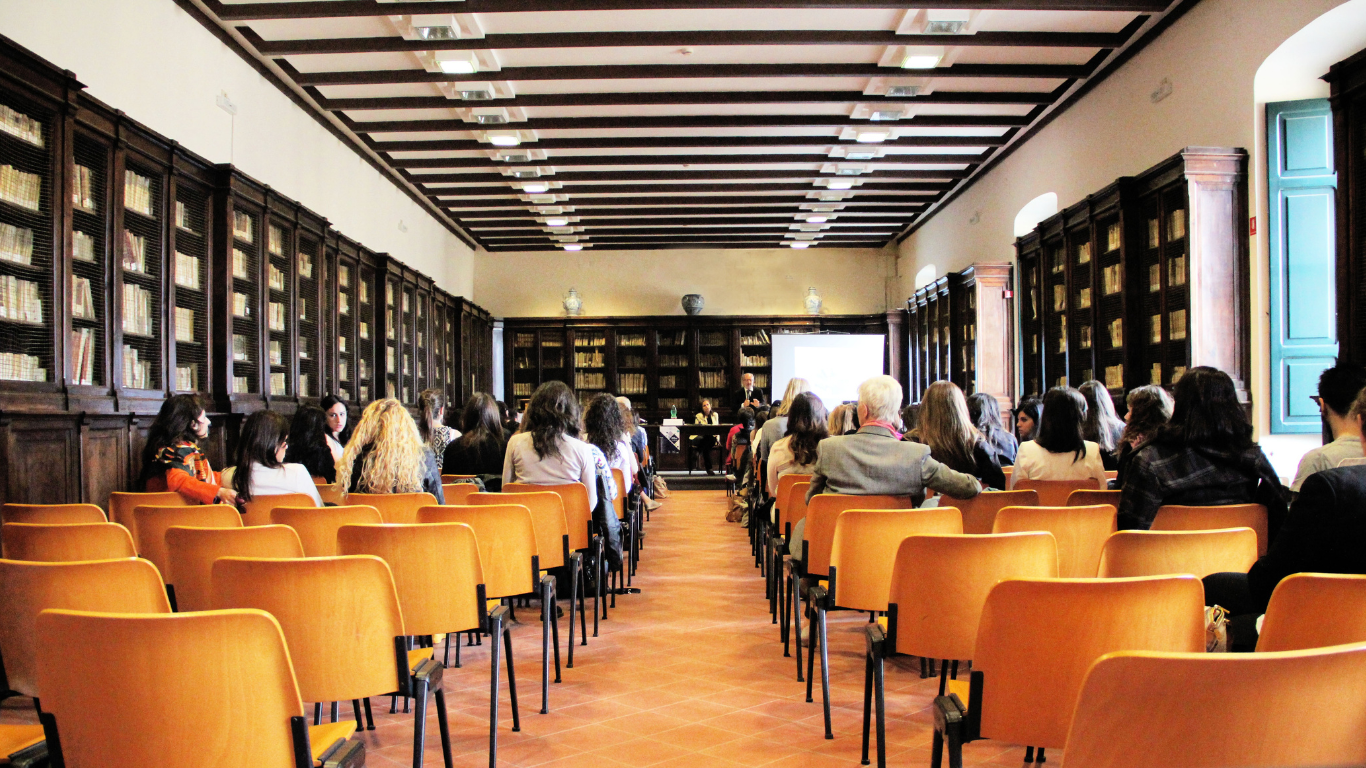Education is like the foundation of a strong house—it shapes people’s ability to grow, work, and contribute to the world. When we talk about “human capital,” we mean the skills, knowledge, and talents people have that help them earn a living and build a better society. Education plays a huge role in forming this human capital, turning raw potential into something valuable. It’s not just about learning math or reading books; it’s about preparing people to solve problems, think creatively, and adapt to life’s challenges. In this article, we’ll explore how education builds human capital in simple terms, looking at its impact on individuals, communities, and economies. Whether you’re a student, parent, or just curious, understanding this role shows why education matters so much. Let’s dive into how it equips people for work, boosts economies, and creates a brighter future for everyone.
What Is Human Capital and Why Education Matters?
Human capital is the collection of skills, knowledge, and abilities people gain that make them productive. Think of it as the tools in your toolbox for life and work. Education is the key way we build these tools. From school lessons to college degrees, education gives people the know-how to do jobs well, whether they’re fixing cars or designing apps. It’s not just about technical skills—education also teaches critical thinking, teamwork, and discipline, which employers value. Without education, people might struggle to find good jobs or contribute to their communities. Countries with strong education systems tend to have stronger economies because their people are skilled and innovative. Education matters because it unlocks potential, helping individuals earn more and societies grow. By investing in schools and training, we’re investing in people, which pays off for everyone in the long run.
How Education Builds Skills
Education is like a training ground for life’s challenges. It starts with basics like reading and math, which are essential for any job. As you move to higher levels, you learn specialized skills, like coding or accounting. Schools also teach soft skills, like communicating clearly or solving problems, which are just as important. For example, a nurse needs medical knowledge but also empathy to care for patients. These skills make people valuable workers, increasing their human capital. Vocational training or college degrees add even more expertise, opening doors to better-paying jobs. By learning, people become more capable, confident, and ready to tackle real-world tasks. This is why education is so critical—it turns raw talent into practical abilities that benefit both the person and their community.
Why Education Boosts Earnings
One big way education shapes human capital is by helping people earn more. Studies show that people with more education—like high school diplomas or college degrees—usually get higher-paying jobs. Why? Because education equips them with skills employers need. A mechanic with training can fix complex engines, earning more than someone without those skills. Education also makes you adaptable; you’re more likely to switch careers or learn new technology. This flexibility leads to better job opportunities and steady income. For example, a teacher with a master’s degree might earn more than one without it. Higher earnings mean a better quality of life—people can afford homes, healthcare, or vacations. This connection between education and income shows how it builds human capital, giving people the power to improve their lives and support their families.
Education’s Role in Economic Growth
Education doesn’t just help individuals—it fuels entire economies. When people are educated, they’re more productive, creating goods and services that drive growth. Countries with high literacy rates and skilled workers attract businesses and investments, which create jobs. For example, a nation with many engineers can build better infrastructure, boosting trade. Education also sparks innovation; think of inventors or entrepreneurs who start companies because of what they learned. Cooperative banks, for instance, thrive when educated staff manage finances well. By building human capital, education reduces poverty, as skilled workers earn more and spend more, keeping money flowing. Governments know this, so they invest in schools and colleges to strengthen their economies. In short, education is like fertilizer for a country’s growth—it makes everything flourish by equipping people to work smarter and dream bigger.
Creating a Skilled Workforce
A strong economy needs skilled workers, and education is the key to creating them. Schools and colleges teach people the know-how for jobs like teaching, construction, or tech development. Vocational programs train folks for hands-on roles, like plumbing or nursing, while universities prepare others for fields like law or medicine. These skills make workers efficient and valuable, helping businesses thrive. For example, a factory with trained technicians runs smoothly, producing more goods. Education also keeps workers competitive in a changing world—learning new software or techniques keeps them relevant. Countries with educated workforces, like Germany or Japan, have strong economies because their people are ready for modern challenges. By building a skilled workforce, education strengthens human capital, which is the backbone of any growing economy.
Encouraging Innovation and Progress
Education doesn’t just teach skills—it sparks new ideas. When people learn to think critically and explore, they come up with solutions to big problems. Scientists, for instance, develop vaccines because of their education. Entrepreneurs start businesses, like tech startups, after learning about markets or coding. Schools encourage creativity through projects or experiments, which can lead to inventions. Even in everyday jobs, educated workers find better ways to do things, like streamlining a shop’s inventory. This innovation drives progress, making life easier and economies stronger. For example, educated farmers might use new techniques to grow more crops, feeding more people. By fostering curiosity and problem-solving, education builds human capital that pushes societies forward, creating a cycle of growth and improvement that benefits everyone.
Education and Social Benefits
Education does more than help you get a job—it makes society better. Educated people are more likely to vote, volunteer, or help their neighbors, creating stronger communities. They understand issues like health or the environment, making smarter choices, like recycling or getting vaccinated. Education also reduces crime; people with skills and jobs are less likely to break the law. It promotes equality, giving women and marginalized groups a chance to shine, which strengthens human capital across the board. For example, educated women often earn more and raise healthier families. Cooperative banks benefit when educated members make informed financial decisions. By teaching values like respect and teamwork, education builds people who contribute to a kinder, fairer world. It’s like planting seeds for a better future, where everyone has the tools to make a difference.
Building Stronger Communities
Education brings people together, creating tight-knit communities. When folks are educated, they’re more likely to join local groups, attend town meetings, or help out at schools. They understand how to work as a team, whether organizing a festival or solving a neighborhood issue. Educated people also share knowledge, like teaching others about budgeting or health tips, which lifts everyone up. For example, a teacher might start a community reading program, boosting literacy. This sense of connection strengthens human capital by making communities resilient and supportive. Cooperative banks often rely on educated members to run programs or make decisions that benefit all. By fostering trust and cooperation, education creates places where people feel valued and empowered to contribute, making life better for everyone around them.
Reducing Inequality
Education is a powerful tool for leveling the playing field. It gives people from all backgrounds—rich or poor, urban or rural—a chance to build skills and succeed. For example, a kid from a small village can become a doctor with the right schooling. This opportunity reduces inequality by helping everyone contribute to human capital. Educated women, in particular, gain independence, earning incomes and challenging old norms. Schools also teach fairness and respect, which helps break down biases. When more people have access to education, society becomes more balanced, with fewer gaps between haves and have-nots. Cooperative banks see this when educated members take loans to start businesses, boosting local economies. By opening doors for all, education ensures everyone’s talents are used, making societies stronger and more just.
Challenges in Using Education for Human Capital
While education is vital for human capital, it’s not always easy to get right. Not everyone has access to good schools—some areas lack teachers or books, especially in rural places. Poor families might pull kids out of school to work, limiting their skills. Even when education is available, it might not match job needs; for example, too many graduates in one field can lead to unemployment. Quality matters too—bad teaching or outdated lessons don’t prepare people well. Inequality also plays a role; girls or minorities might face barriers to learning. Governments and communities need to fix these issues by building schools, training teachers, and making education affordable. Only then can education fully build human capital, ensuring everyone has a shot at a better life and society gets the skilled, creative people it needs.
Access to Quality Education
Not everyone gets a fair shot at good education, which hurts human capital. In some places, schools lack basics like desks or trained teachers, especially in rural or poor areas. Kids might walk miles to school or drop out to help their families earn money. Even when schools exist, they might not teach skills that match today’s jobs, like tech or trade skills. This leaves people unprepared, limiting their ability to contribute. Governments can help by building schools, offering scholarships, or training better teachers. For example, programs that provide free books or meals keep kids in class. Cooperative banks might fund community schools, boosting local education. When everyone gets quality learning, human capital grows, as more people gain the tools to work, innovate, and improve their lives and communities.
Matching Education to Job Needs
Education only builds human capital if it prepares people for real jobs. Sometimes, schools teach things that don’t match what employers want. For example, a country might have too many arts graduates but not enough engineers or nurses. This mismatch leaves people jobless, wasting their potential. Vocational training can help, teaching hands-on skills like welding or coding that lead to work. Colleges should also update courses to include new fields, like renewable energy. Governments and businesses can work together to predict job trends and guide schools. For instance, cooperative banks might need more financial analysts, so local colleges could offer relevant classes. When education aligns with job needs, human capital thrives—people get hired, businesses grow, and economies stay strong, making the most of everyone’s talents.
How to Strengthen Education for Human Capital
To make education a powerhouse for human capital, we need smart strategies. First, ensure every child can go to school, especially in poor or remote areas, by building schools and offering free supplies. Train teachers well so they inspire and teach useful skills. Update what’s taught to match today’s world—think coding, green tech, or healthcare. Vocational programs can prepare people for jobs fast, while colleges should focus on critical thinking and adaptability. Governments should fund education generously, and communities can pitch in, like cooperative banks supporting local scholarships. Encourage lifelong learning too—adults need training to keep up with new tech or career changes. By making education accessible, relevant, and high-quality, we build human capital that powers progress, helping people and societies reach their full potential.
Investing in Schools and Teachers
Strong schools and great teachers are the heart of education’s role in human capital. Governments should build schools where they’re needed most, like rural areas, and equip them with books, labs, and internet. Teachers need training to teach well, not just facts but also how to think creatively. Paying teachers fairly keeps them motivated. For example, a well-trained teacher can inspire a kid to become an engineer, adding to human capital. Communities can help—cooperative banks might fund school upgrades or teacher workshops. Programs that give kids free meals or uniforms also keep them in class. When schools are solid and teachers are skilled, students learn more, gaining the tools to work, innovate, and contribute to society, making everyone stronger.
Promoting Lifelong Learning
Human capital grows when people keep learning, even as adults. Jobs change fast—new tech or industries pop up, and old skills might not cut it. Education shouldn’t stop after school. Short courses, online classes, or workshops can teach adults new skills, like digital marketing or solar panel repair. Companies can offer training to keep workers sharp. For example, a bank teller might learn data analysis to take on bigger roles. Governments can support this with free or cheap programs. Cooperative banks could fund community classes, boosting local skills. Lifelong learning keeps people adaptable, employable, and creative, adding to human capital. It’s like keeping your toolbox stocked with the latest tools, ready for whatever work or life throws your way.




